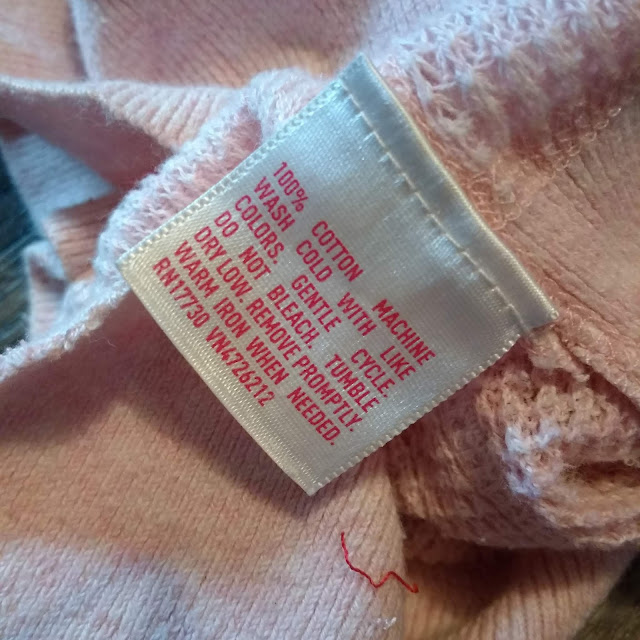Ethical Fashion
Fashion is one of the few things in
life that affects the entire world. From our first breath, we are clothed with products of the textile industry. As immense as this industry is, most people know little about the story behind their clothes. This story is one of widespread suffering, and it challenges us into action.
The
human suffering that happens behind the scenes of the fashion industry is
unbelievable. Capitalist competition requires factory owners to sell products at continually diminished prices. As production costs have not equally dropped, corners are
cut by lowering wages, ignoring building safety requirements, and increasing
hours. One woman explains in the documentary The True Cost that she earns two dollars a day and was beat along with other union leaders who peacefully requested change. In 2013, Rana Plaza, a clothing factory in Bangladesh, collapsed,
killing over one thousand workers. John Hilary, executive director of the
charity War on Want, comments on the tragedy in that same documentary:
“I think one of the most
profoundly impressing things about the Rana Plaza disaster was that [...] the workers had already pointed out to the management the cracks in the
building. They had already pointed out that the building was structurally
unsafe, and yet they’d been forced back in.”
Although 2013 played host to four of the fashion industry's greatest tragedies, 2014 was its greatest in profit. The tragedy continues in the cotton fields of India as Monsanto's genetically modified cotton seeds wreak havoc on farmers' bank accounts. These seeds, known as BT cotton, are patented by Monsanto, forcing farmers to buy seed annually. In addition, the seed still requires large amounts of pesticides, despite its original promises. Dr. Pritpal Singh documents an enormous increase of mental illnesses, cancer, and birth defects around the cotton growing region in India. Seventy to eighty kids per village in this region suffer from severe physical handicaps and mental retardation. As their families suffer, farmers sink in hopeless debt, depending futilely on Monsanto for hope as Monsanto's cotton seeds fail to produce efficiently enough. Eventually, their land is taken away. According to the Center for Human Rights and Global
Justice, a quarter of a million cotton farmers committed suicide over sixteen
years. In 2013,
11,772 farmers committed suicide: forty-four deaths per day. Without realizing it, we are inviting disease and suffering into not only our own bodies, but also those of the workers and their families.
The fashion industry also introduces enormous amounts of toxic chemicals into our lives. The industry spends two billion dollars per year on chemicals, making it second only to agriculture in the consumption of chemicals. Fifty percent of these chemicals are considered toxic by the World Health Organization. One study shows three million cases of occupational illnesses and twenty thousand poisoning deaths among factory workers. The countries that host the factories often do not have strict regulations for toxic waste disposal, so the chemicals used in textile production pollute the water of cities around them. The toxins used in the garment
construction are then placed directly on our skin. Ridiculously, we sing the praises of pesticide-free produce and medicated patches without putting the two together: our clothing ought to be organic too, as much for the workers' and farmers' sakes as for our own.
“The
clothes we wear are in constant contact with our most absorptive and largest
organ. […] If clothes, like foods, were required to list the ingredients (both
chemical and social) that were used in the production it would make for
horrific reading.”
- India Flint
Tests have shown that the average t-shirt contains, among
other things, chemicals that alter hormones, specifically causing feminization. Tanneries
are infamous for their toxicity due to the modern chemical-based method of tanning leather.
Near a tannery in Kentucky, the number
of leukemia cases is five times the count anywhere else in the United States. Our clothing has been linked to cancer and hormone irregularities, and yet nothing has been done about it.
“We blame the brands; they blame us. We
implore “Stop producing so many items of clothing,” and they respond, “stop
buying.”
-Kate Black, author of
Magnifeco: Your Head-to-Toe guide to Ethical Fashion and Non-Toxic Beauty
Do you hear the call, the challenge? It starts with us. We have the power
to choose ethically-made and organic garments, healing humanity. Ethical brands
of clothing provide the world with proof that their factories respect the
workers and pay them fairly. They provide the transparency that we never knew
we needed and fast fashion chains will not provide. As consumers we should
make use of our right to know what we are buying and where our money is going.
Companies should tell us, and we should ask, where they have their factories
and if they have enforced contracts of conduct, securing safety, fair wages,
and respect for the workers. An option exists to support, and not exploit,
human beings. Lucy Siegle, a British journalist and writer, shares a dream that
ought to be reality:
“[…] all consumers saying, “I’m sorry. It’s not
acceptable for someone to die in the course of a working day.”
Another step we can take is to use the millions of garments that have already been made. This addresses the problem of
textile waste: the tons of chemical-enriched piles clogging landfills for
centuries. The average American throws out sixty-eight pounds of clothing per year, which is a part of the 13.1 trillion tons of annual textile waste piling up in our landfills and releasing toxins into the earth and air. Buying second-hand supports ethical fashion by simply not supporting
fast fashion chains. As these clothes have been pre-owned and pre-washed
multiple times, their toxicity has gone down significantly, making a thrift
store a healthier fashion option. As the art of maintaining clothes has disappeared with concepts
of fit, quality, and craftsmanship, so the life of a garment has diminished. This need for endless shopping is exaggerated by fast fashion chains who introduce new lines weekly. We are constantly surrounded by large corporations spending millions of dollars to convince us to buy, wear once, discard, and repeat. Creating a capsule
wardrobe is essential to combat the pressure to wear clothes that are "in." A capsule wardrobe is composed of pieces that are timeless, made to last, and versatile: the perfect recipe for reducing waste, boycotting fast fashion chains, and still being fashionable.
We
have the power to change billions of lives for the better. Why don’t we? We
have all of the resources, opportunities, and money to change the world. Why
don’t we? Instead of being hypocrites by wearing clothes made in a form of slavery, we could advocate for our beliefs. Thousands of workers struggle to give their
children hope with the measly salary that they receive. Ethical fashion pays
for their food, shelter, and the future of their children. The industry, affecting everyone
worldwide, harms everyone worldwide. Not one person has been unaffected by
excess chemicals, materialistic depression, or financial ruin. We continue to buy health-compromising clothes, because we are
addicted to cheap fashion. This addiction causes others to lose their health
and happiness as well. Change must come. It begins by being humanly disgusted with the stories
behind our clothes. It begins with one person saying it is not right for people
to risk their lives for my T-shirt. It begins when we prioritize life, love,
health, and joy over money, materialism, convenience, and greed. It begins when we love as Christ loved us. Ethical fashion is saying, one human to another, “You deserve a future.”
. . .
--I took out most of my in-text citations to make for a more impactful and easy read. Below is a list of all of the resources behind my facts. Please read to verify my assertions and learn more about supporting ethical fashion. I highly recommend watching The True Cost on Netflix above any of my other sources. It moved me to tears to see the poverty, hopelessness, and devastation caused by the fashion industry around the world. And I live in an extremely poor country and see relatively similar sights on a regular basis.--
“Why India's Cotton Farmers Are Killing Themselves.” www.cnn.com/2015/04/19/asia/india-cotton-farmers-suicide/index.html.
Wear No Evil: How to Change the World with Your Wardrobe, by Greta Eagan
Overdressed: the Shockingly High Cost of Cheap Fashion, by Elizabeth L. Cline
Magnifeco:
Your Head-to-Toe Guide to Ethical Fashion and Non-Toxic Beauty, by Kate
Black
Second Skin, by India Flint
“What Really Happens to Old Clothes Dropped in Those in-Store Recycling Bins | CBC News.” www.cbc.ca/news/business/clothes-recycling-marketplace-1.4493490.
“Why You Should Never Wash Your Jeans.” The Independent,
www.independent.co.uk/life-style/fashion/levis-ceo-explains-why-you-should-never-wash-your-jeans-a6881031.html.



Comments
Post a Comment